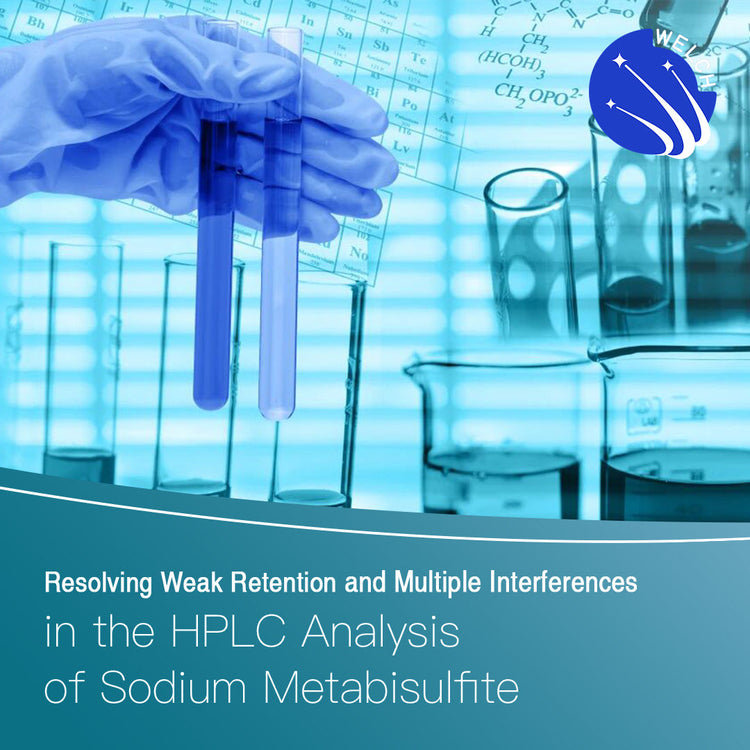Table of contents
Introduction
Sodium metabisulfite, also known as (di)sodium pyrosulfite or sodium disulfite, has the chemical formula Na₂S₂O₅. It is widely used in the food, pharmaceutical, and chemical industries. In these applications, common additives such as citric acid, sodium benzoate, and disodium EDTA can cause significant interference in the determination of sodium metabisulfite content.
Analytical Challenges
Sodium metabisulfite is typically quantified using titration, UV–Vis spectrophotometry, or high-performance liquid chromatography (HPLC). However, due to its high polarity, it exhibits weak retention in reversed-phase HPLC, making it highly susceptible to interference from solvents, mobile phase components, and formulation excipients.
In conventional HPLC methods, sodium metabisulfite is often detected using a UV detector at wavelengths below 220 nm or with a refractive index detector (RID). At low UV wavelengths, many substances exhibit strong absorption, leading to baseline noise and overlapping peaks that compromise the accuracy of the analysis. The RID, being a universal detector, is sensitive to nearly all components, which further increases the likelihood of interference from impurities.
Optimized Approach
To achieve both sufficient retention and effective separation from common interfering substances such as citric acid, sodium benzoate, and disodium EDTA, an optimized method was developed. Experimental results demonstrated that the Welch Xtimate® Sugar-H column provided excellent retention of sodium metabisulfite while enabling clear separation from these potential interferents.
Conditions:
- Column: Xtimate® Sugar-H (7.8×300 mm, 5 µm)
- Mobile phase: 0.0125 mol/L sulfuric acid solution
- Flow rate: 0.5 mL/min
- Injection volume: 10 µL
- Column temperature: 80 °C
- Detector: UV, 214 nm


Conclusion
This method features a simple mobile phase system that ensures adequate retention of sodium metabisulfite and eliminates interference from other components in the sample. The approach is stable, reproducible, and fully meets the requirements for routine determination of sodium metabisulfite.

